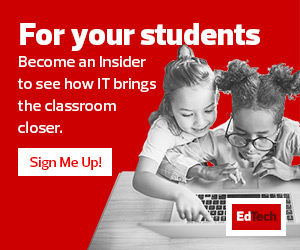Digital Equity Relies on Students’ Access to Online Learning
The Toronto District School Board took steps to address the digital inequities that would prevent its students from learning virtually. The district provided families with tablets or Chromebooks. Then it prioritized getting internet access to students without it, because many lessons and the programs that support them need to happen online. The district also deployed hotspots to help students connect.
As a result, students who want to continue online learning this school year will have the tools to do so. In an online environment, not having the necessary technology is the equivalent of locking students out of the building in an in-person setting.
RELATED: Digital equity still matters for students in online environments.
Digital Equity Requires Students’ Competence Using Technology
Along with having the devices, students must know how to use them. School districts need to provide support to students, families and educators. Without knowing how to use the device, access the programs or get online, virtual learning — and the device itself — becomes useless.
While many users are more fluent in educational technology after the past 18 months of online learning, schools should set up a way to communicate and troubleshoot with families having tech problems at home. It’s not enough to try to solve problems with using a device through the device itself. There must be other ways for schools to initiate that conversation with parents and families.
Educators’ Competency with Tech Supports Digital Equity
Educators must also be well versed in how the technology works. This is necessary not just for equity in virtual and hybrid learning environments, but also for blended learning activities in the classroom. Using devices and apps as a substitute in an activity for which pen and paper would suffice is not a meaningful use of the technology.
Educators should understand how to use the device and the applications on it to improve the classroom experience. Inequities can develop when educators don’t know how to properly use educational technology in the classroom: Students across classrooms, grade levels and districts aren’t exposed to the same experiences and don’t have the opportunity to learn the same skills as their peers.
READ MORE: Without digital equity, students lose the opportunity to learn.
Districts should ensure teachers also have adequate technological professional development so that devices don’t lose their value and become nothing more than shiny new toys.
This article is part of the “ConnectIT: Bridging the Gap Between Education and Technology” series. Please join the discussion on Twitter by using the #ConnectIT hashtag.
![[title]Connect IT: Bridging the Gap Between Education and Technology](http://www.edtechmagazine.com/k12/sites/default/files/articles/2014/05/connectit.jpg)










